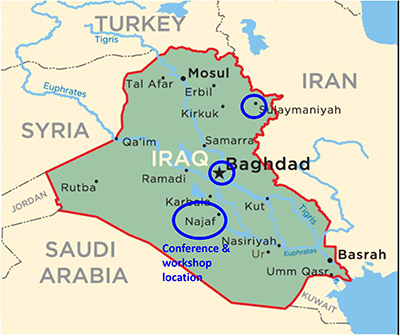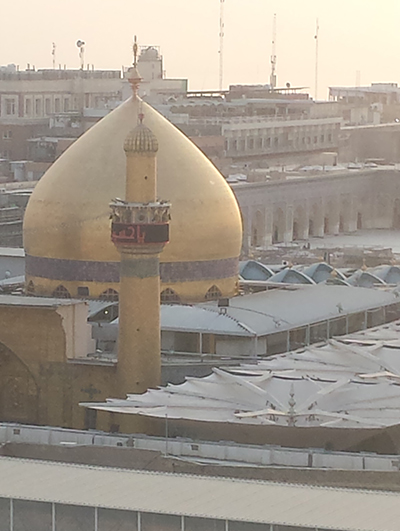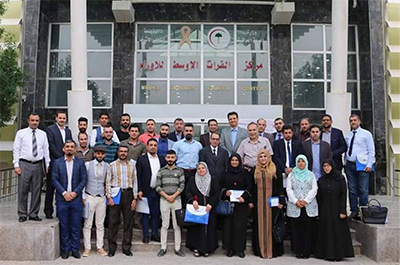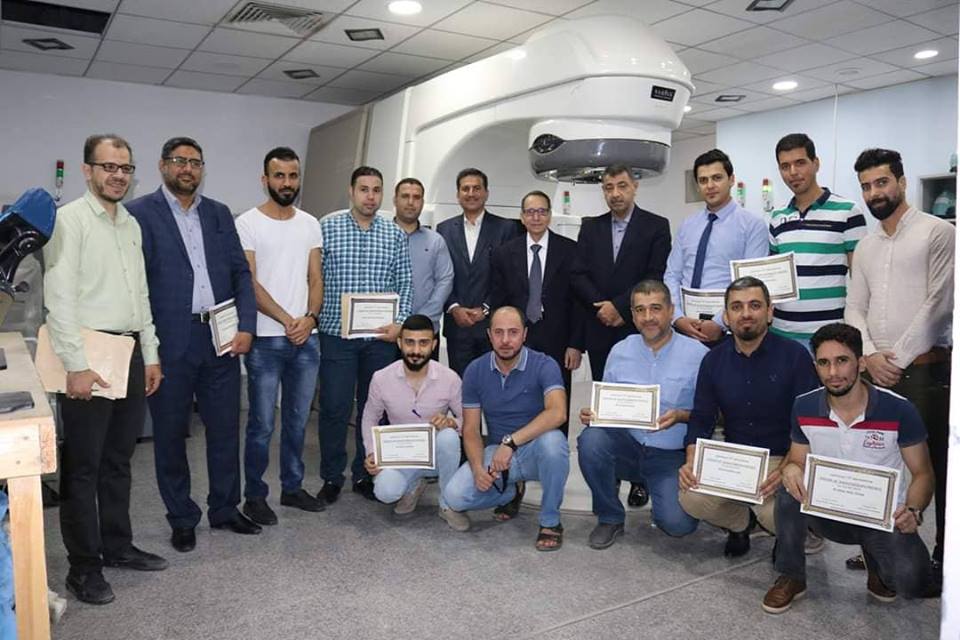The first medical physics conference and workshop was held at the Middle Euphrates Cancer Centre (MECC) in the holy city of Najaf, Iraq during the period October 12‐13, 2018. Figure 1 provides information on the location of this historic city. The author was the sole faculty conducting this activity.
Mini‐course on imaging for radiotherapy treatment planning and verification:
Part 1: Simulation and CT‐simulation – technical and physics considerations
Part 2: CT‐simulation process
Part 3: Multimodality imaging
Part 4: Treatment delivery verification
Lecture 1: Dose specifications for photon and electron beams
Lecture 2: Quality and safety in radiation oncology
Lecture 3: Monitor units calculations
Lecture 4: Dosimetry of photon and electron beams: review of the TG‐51 and IAEA TRS‐398 dosimetry protocols
Workshop 1: Linear accelerator calibration and quality assurance
Workshop 2: Treatment planning – clinical treatment plans review and critique
There were approximately 45 attendees from five Iraqi cities (Najaf, Basra, Hilla, Baghdad and Mosul). Attendees received certificates of completion signed by myself and the MECC director, Dr. Emad Kareem. Additionally, I pointed out to the attendees the valuable resources freely available on the American Association of Physicists in Medicine (AAPM) website.
The conference was organized by Dr. Kareem and Dr. Haider Rabee, chief of the clinical oncology service. It is noteworthy that amongst the attendees were faculty from Kufa University Medical College. The chairman of the Iraqi cancer board, Dr. Haider Hamza, travelled from Baghdad specially to attend the conference. This has given medical physics in Iraq recognition by the official authorities. There was also local media coverage and a press interview, adding to the popularization of the event locally.
A few words on how this conference came about, and the MECC, are in order to give context to this activity. I had known Dr. Rabee for a number of years. I had planned a vacation in Iraq and contacted him to see if I can be of any assistance while I am there. He welcomed the idea of holding this conference and workshop. He worked with Dr. Kareem to put the workshop together in record time. They secured funding for local expenses from the Imam Ali endowment which graciously supported this activity with enthusiasm.
The MECC is a modern facility that sees approximately 2000 – 2500 new patients annually. Sixty percent of patients seen at MECC are from Najaf governorate. The rest are from other Iraqi provinces. Some patients seen there come from as far afield as Mosul. It has a linear accelerator, CT‐simulator and a treatment planning system for the radiotherapy program. The equipment is used for extended hours daily to accommodate the clinical workload. They participate in the IAEA quality assurance service for peer‐review of their linac calibration. MECC also provides chemotherapy, imaging and other services to aid in the diagnosis and treatment of cancer. It is affiliated with Kufa University College of Medicine. It conducts weekly continuing education seminars attended by faculty, staff, medical students and residents. Daily sessions and clinical rotations for final year medical students are also offered.
I am indebted to Drs. Kareem and Rabee for their impressively generous hospitality and the Imam Ali endowment for supporting this conference and workshop. The historic city of Najaf was a superb venue for it. The Imam Ali shrine gold plated dome and minaret dominate the city's skyline (figure 2). Some photographs of the workshop and its environment are presented in figures (3,4).
While I was in Iraq, I also visited the Radiotherapy Department, University of Baghdad Medical College and gave two lectures to residents and attended a multi‐disciplinary tumor board (MDT) on neurooncology on October 14 & 16. This was an opportunity to renew my friendship with the Professor of Clinical Oncology (Dr. Khudhair Al‐Rawwaq). I also met the dean of the Baghdad Medical College, Professor Ali Al‐Shalchi, a neurosurgeon, and other faculty.
I spent the morning of October 11, at another oncology teaching hospital in Baghdad (Al‐Amal Hospital) and conducted a short workshop on treatment planning. I had previously travelled to the city of Sulaimaniyya in the Kurdistan region and visited the Zhianawa Cancer Centre (ZCC), a place that I am well acquainted with having participated in workshops and conferences there in 2015 and 2017. Wherever I found myself, I was humbled by the warmth of the hospitality extended to me. What was planned as a personal vacation blossomed into a celebration of Iraqi medical physics, a specialty that is developing rapidly in a country that needs it most.
The narrative provided above stands in stark contrast to the media depiction of Iraq over the past sixteen years that dominates our television, computer and smartphone screens. It demonstrates clearly that in the midst of turmoil, there are intellectually and professionally sophisticated people working with dedication and resilience against impossible odds, with very little resources and under unimaginable circumstances to provide high quality care to cancer patients, totally undeterred by the dangers they bravely face daily. They challenge themselves every day to excel and exceed all expectations. It is a sobering reminder to what we take for granted in the West.
This was an immensely satisfying experience for me. I renewed longstanding friendships and made new ones.
 Figure 1: Map of Iraq showing the cities the author visited. To appreciate the scale, the country is ~ 1000 km north‐south.
Figure 1: Map of Iraq showing the cities the author visited. To appreciate the scale, the country is ~ 1000 km north‐south.
 Figure 2: Imam Ali shrine gold plated dome and minaret dominate Najaf's skyline
Figure 2: Imam Ali shrine gold plated dome and minaret dominate Najaf's skyline
 Figure 3: Conference attendees at the entrance of the Middle Euphrates Cancer Centre (MECC).
Figure 3: Conference attendees at the entrance of the Middle Euphrates Cancer Centre (MECC).
 Figure 4: In the linac room, some of the attendees showing their certificates. MECC director, Dr. Emad Kareem, is 4th from the right. Chairman of the Iraqi Cancer Board, Dr. Haider Hamza, is 6th from right (to the author's right).
Figure 4: In the linac room, some of the attendees showing their certificates. MECC director, Dr. Emad Kareem, is 4th from the right. Chairman of the Iraqi Cancer Board, Dr. Haider Hamza, is 6th from right (to the author's right).
*Disclosure: The author is a native of Iraq. He can be reached via e‐mail.
We have noticed that you have an ad blocker enabled which restricts ads served on this site.
Please disable it to continue reading AAPM Newsletter